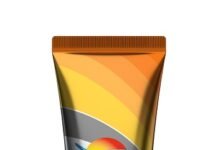Kremsmünster(Austria) – In late 1982, a unique innovation was introduced in the packaging market – the cardboard-plastic combination. K3 has remained consistently popular ever since, and countless products are sold in this sustainable packaging today – from yogurts and spreads to ready meals and salads to laundry detergents and dishwasher tablets. Greiner Packaging is now celebrating the 40th anniversary of its packaging solution.
Since then, numerous innovations have shaped K3’s trajectory – most recently, the self separating K3 r100
The packaging innovation was born out of the oil crisis underway at the time. The cardboard-plastic combination was developed in the small Swiss town of Diepoldsau with a simple aim – to save plastic.
Peter Akermann, known at Greiner Packaging as ‘the father of K3”, is proud of the results, “The dramatic increases in the price of oil triggered by the oil crisis of the 1970s created a very challenging situation for many sectors, including the plastics industry. With that in mind, we made it our mission to develop a packaging design that would use less plastic while protecting the product inside just as effectively. A team of Swiss colleagues worked tirelessly on the development project over many months and carried out an extensive battery of product tests. Finally, we arrived at the solution, which subsequently achieved market success under the name K3.”
Reducing material usage has always been one of the cardboard-plastic combination’s greatest benefits – initially for financial reasons and now especially with regard to sustainability.
K3 boasts an array of advantages, even after 40 years K3 packaging consists of two components – a plastic cup and a cardboard wrap. The cardboard wrap lends sturdiness to the plastic cup so that the cup can have particularly thin walls. Using less plastic to produce a K3 cup significantly reduces the associated CO2 emissions.
In addition, cardboard-plastic combinations are readily recyclable – it is no hassle for consumers to detach the cardboard wrap from the plastic cup to dispose of them separately. The new, patent-protected Greiner Packaging tear-off system makes the separation process extra simple. The unprinted cup produces top-quality recycled material.
K3 can also be made with material recovered from recycling, with the option to produce both the cardboard wrap and the plastic cup from as much as 100% recycled material – up to 100% r-PET in the case of the cup.
“There are plenty of reasons why cardboard-plastic combinations have been on a successful journey for decades. At Greiner Packaging, we are especially proud both to have invented this product category and to have kept on developing it. I have been working on K3 products for 20 years now and have helped to bring nine K3 innovations to market during that period alone. We take particular pride in our latest innovation, K3 r100, whose cardboard wrap automatically separates from the plastic cup during the waste disposal process,” says Jens Krause, sales director at Greiner Packaging.











